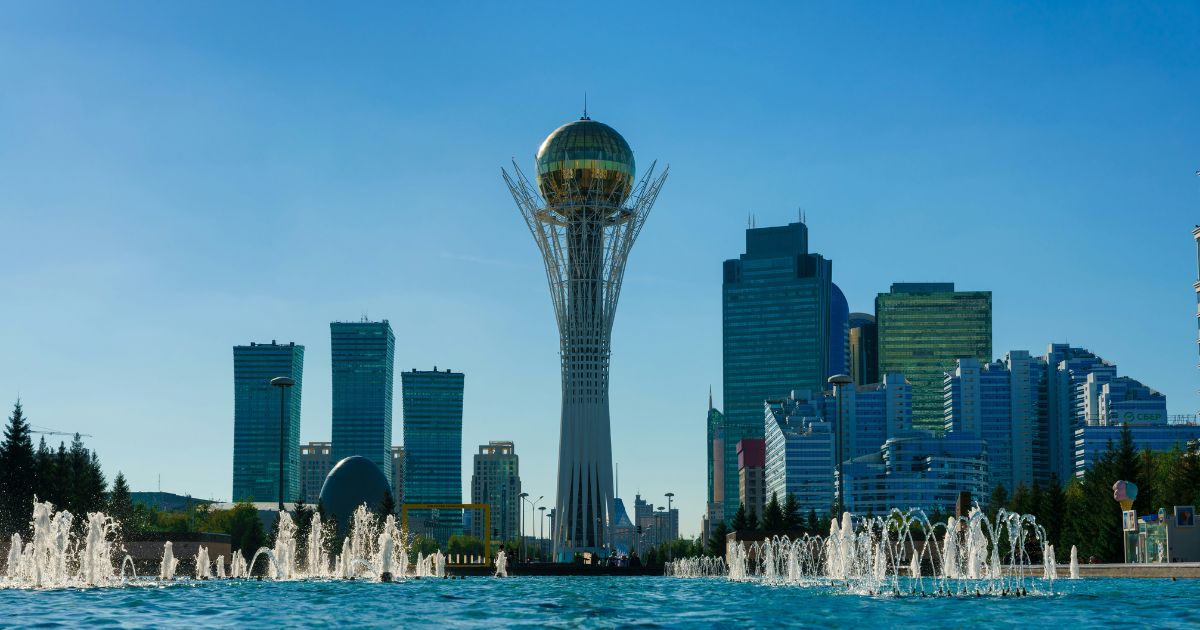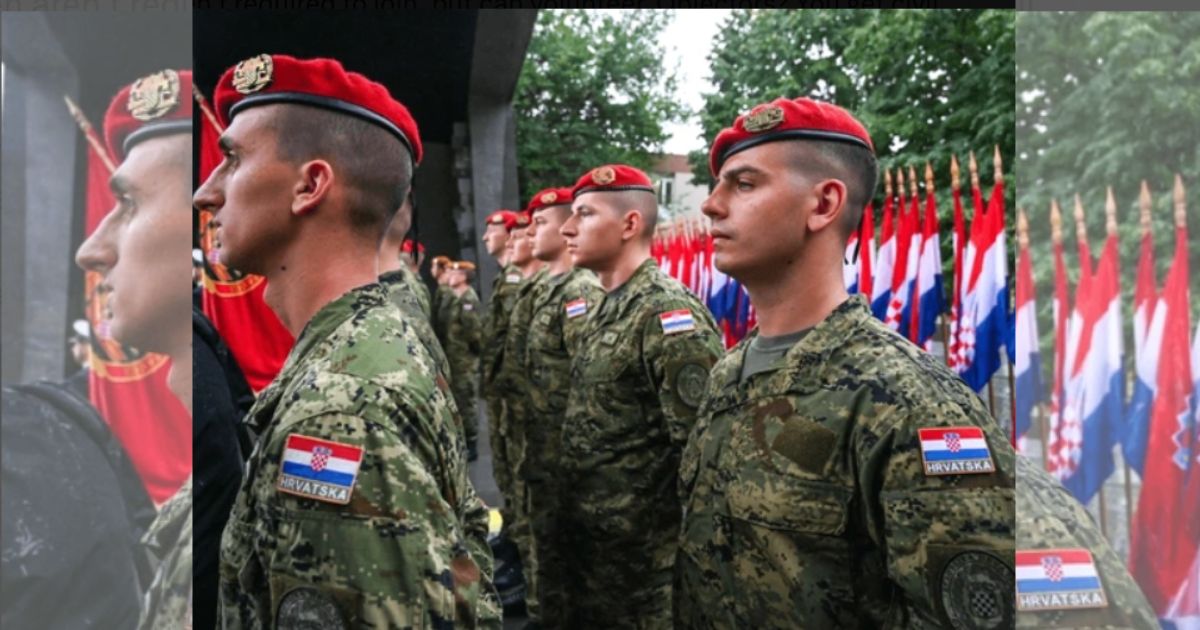During the opening of the 2025 Seoul architecture biennale, a twisted giant wall constructed from 1,428 steel tiles stands out as passersby enter Songhyeon Green Plaza. The 90 metre-long, 16 metre-tall wall doubles in the middle, creating an opening that invites people into the plaza.
Nicknamed the ‘Humanise Wall,’ the building contains photographs of 400 buildings in 38 nations and by 110 architects, and nine community projects that show suggestions for how buildings in this city can be transformed.
The ‘Humanise Wall’ is the entrance to the 5th edition of the Seoul Biennale of Architecture and Urbanism, which seeks to initiate a public debate on how to ‘humanise’ buildings for the welfare of the citizens. This year’s event, which is called ‘Radically More Human,’ is led by British designer Thomas Heatherwick as general director and follows on from his ‘Humanise’ campaign, a worldwide initiative which he launched with his 2023 book ‘Humanise.’ The campaign makes a case against the building of ‘boring’ buildings, asserting how dull and soulless buildings are bad for our brains, our economy, and the world, and demanding more joyful, interesting, and human buildings and cities.
‘We’ve experienced an epidemic of dullness. Blandemic (bland + epidemic), I named it. The case is, we’ve experienced things where everything’s just too flat, too boring, too straight, too glossy, too dull, too faceless, too stern. When you experience all of them repeatedly, it’s poisonous and boring,’ Heatherwick said in Seoul before the opening of the biennale. ‘Just as we require nutritional complexity for our gut biome, we require visual complexity. There’s a need for fascination.’ It’s not his own point, he indicates, but one ‘made by researchers examining the way our brains react to buildings.’
As per research conducted by the Humanise Campaign, the presence of dull buildings with minimal visual complexity can not only significantly affect public health but also culture and society. Textures, warmth, and diversity in buildings can make humans feel low and disconnected; too uniform or repetitive buildings can cause mental fatigue, disorientation, and stress. Curved façades and organic shapes can decrease cognitive stress and make everyday environments more comfortable and intuitive.
We’ve done polling across thousands of citizens of Seoul for the biennale by the Humanise campaign, and 97% of them, which is an incredibly high number, say they don’t like the residential buildings that are built here. And 90% of Koreans report buildings influence how they feel,’ Heatherwick told us, referring to research findings carried out by his practice for the biennale, to be released during the ‘Emotional City Conference’ on September 27 and 28.
But since there is ‘no public discourse about the worldwide epidemic of characterless places,’ this biennale has a big role to play, he maintains. ‘The entire biennale is concerned with health and the necessity for places to be more stimulating. It’s really a nutritional public health debate.’
To get people involved in this public debate, he needed to grab people’s attention and invite people’s interest – that is why the giant wall. The ‘Humanise Wall’ drew its inspiration from jogakbo, a Korean patchwork cloth created by sewing together tiny, leftover pieces of cloth (most often from silk or ramie) to produce a wrapping cloth, a bojagi.
‘In London’s Victoria and Albert Museum, there is a group of jogakbos. I have visited Korea numerous times, and I adore the textiles and the fabrics. The ‘Humanise Wall’ is akin to a large, enormous magazine. The patchwork of the jogakbos might be a way to accommodate many different stories being told and the efforts of the local communities, all existing in an unordered fashion,’ Heatherwick explained. ‘It’s like a giant bibimbap [a Korean mixed rice dish with vegetables].’
When entering the gateway, visitors encounter 24 smaller partitions facing the ‘Humanise Wall.’ These ‘Walls of Public Life’ are giant fragments of buildings, 2.4m wide by 4.8m high, inspired by Stonehenge in England, and highlighting how the façade of a building plays a big role in shaping people’s emotional responses. The 24 walls are designed by 24 teams around the world, comprising individuals from diverse creative and cultural fields, including some who have never designed a building before. Participants include Korean American chef Edward Lee, British fashion designer Stella McCartney, a jeweller, a car design team at Hyundai, and two traditional builders from Burkina Faso, to name but a few.
‘It is emotion that makes you cherish something.” So it’s actually a mindset change for our world to be more concerned with examining in close detail how people feel,’ says Heatherwick. ‘Just as Korea is a skincare world leader, I thought we would concentrate on skin, the skin of buildings, for the biennale. It’s sort of a cut-out of a future building.”. Each and every one of them has visual interest and complexity, and it’s an example where you can pick any one of those and say, ‘make it a building, please.’ The campaign is all about transforming the buildings that are constructed.’
Hitherto, there has been immense significance attached to the interior, but for the public, exterior matters more, he goes on elaborating. There is a smaller number of people who are in most buildings and a much larger number who are walking by the outside. I’m not saying the inside isn’t important. It is important. But we’re actually very good at the insides.”. The balance of love has been on the inside. If someone asked him whether people could feel stressed if a city does become too visually complicated and stimulating, Heatherwick would say he’s not advocating for buildings to appear ‘crazy.’
You visit a forest, and it’s full of visual richness. But there are no huge show-offs in a forest. So we shouldn’t confuse my work with the argument,” he said. “Effectively, I’ve gone too far with my own work on this shortage of storytelling in buildings. I’m not suggesting every building is going to be some outrageous shape, and it’s not going to happen because it’s not within our budget. But just be generous, be kind.
The main venue of the biennale is the Songhyeon Green Plaza, but the biennale is extended to the Seoul Hall of Urbanism and Architecture, which features an additional three shows – the ‘Cities Exhibition,’ with 25 building facades from 21 cities, the ‘Seoul Exhibition,’ showing 18 proposals for the future of Seoul, and ‘Global Studios,’ an interactive media show examining the feelings and memories generated by the faces of buildings.
‘The ideal is the city-wide dialogue. I believe Seoul can quite possibly be one of the first humanised cities and teach other cities globally how to involve the citizens because it has receptiveness and open-mindedness,’ he added.
‘Korea is a world leader in beauty and knowledge of the skin. Korea is a leader in pop music, in drama, and in cuisine, but it is not in architecture. The Korean economic miracle, which has enabled and supercharged the progress, is incredible, but now the pali-pali [‘quick quick,’ the Korean term for doing something fast] mentality must be applied and refined to introduce the human element in the right manner. And beneath it all, emotion is what propels us.’




